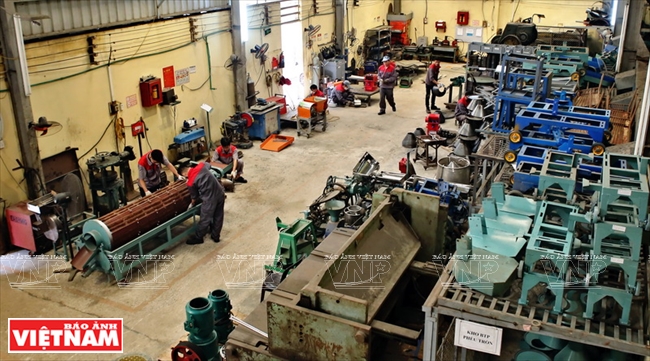
At the workshop of the Tuan Tu Joint Stock Investmnet Company - a supplier of farming machines.
Photo: Cong Dat
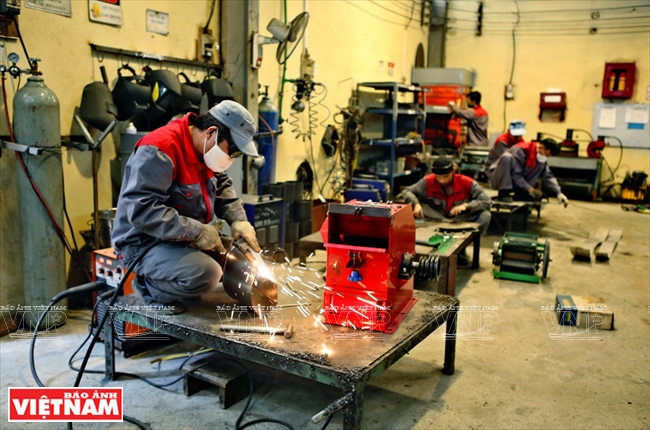
Manufacturing multifunctional milling machines at the Tuan Tu Joint Stock Investment Company. Photo: Cong Dat
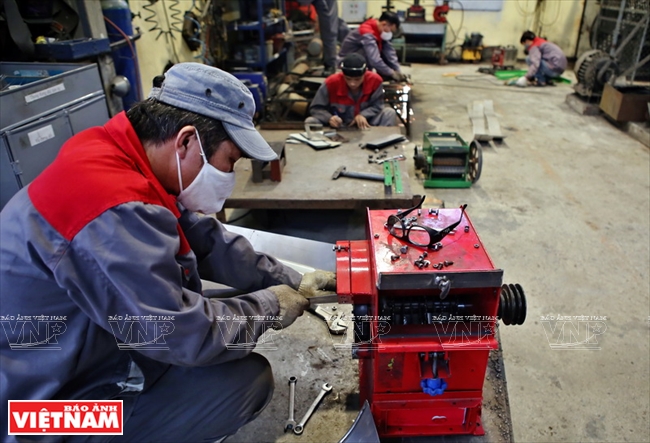
The Tuan Tu Joint Stock Investment Company has for years supplied Hanoi farmers with products of high quality,
competetive prices and good post-sale services. Photo: Cong Dat |
After four years of mechanisation in rice production, Phu Xuyen has taken the lead in the movement that helps increase rice productivity from 10 to 15%, reduce production costs from 0.7 to 2.8 million dong/ha/crop, reduce post harvest losses by 2-3%, ensure seasonality and improve the quality of finished rice.
Phu Xuyen district has 148 transplanting machines, three automatic chains for sowing rice seeds in the communes of Dai Thang, Hoang Long and Thuy Phu. The mechanisation has increased the rice production from 1.15 to 1.2 higher than human labour.
After the recent two crops, the use of machines in farming, from preparing the soil, sowing rice seeds to transplanting and harvesting, has helped reduce production costs and bring high economic value to the farmers in Huong Ngai commune, Thach That district.The cost for rice production has been reduced about 28%, saving 500VND/m
2.
Vu Xuan Than, a famer in Huong Ngai commune, said that thanks to the application of mechanisation in rice production, the cost for each crop/3,600m2 has been reduced two million dong, from six million dong to four million dong. Like the family of Vu Xuan Than, many households in the commune also enjoy the benefits of mechanisation in rice production.
In Hanoi, 100% of the area for rice cultivation and over 60% of the rice area are harvested by machines. This promises to bring bumper crops to the capital and serves as an impetus for completing the programme early on new rural construction.
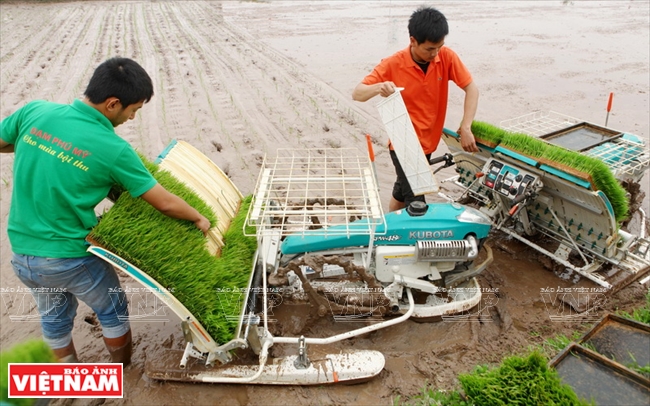
Farmers in Hanoi use rice-transplanting machines. Photo: Files
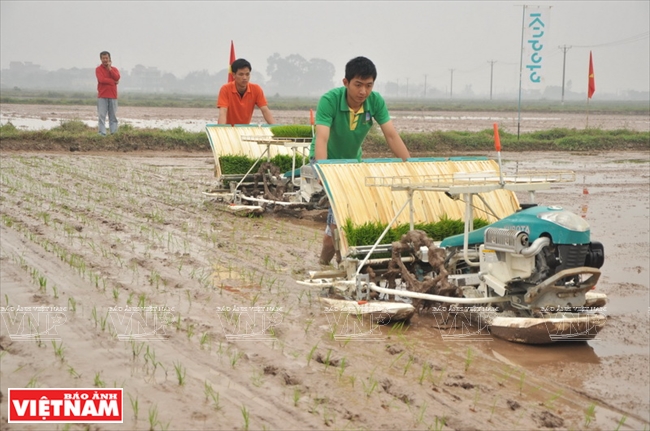
Rice-transplanting machines help reduce labor for farmers. Photo: Files
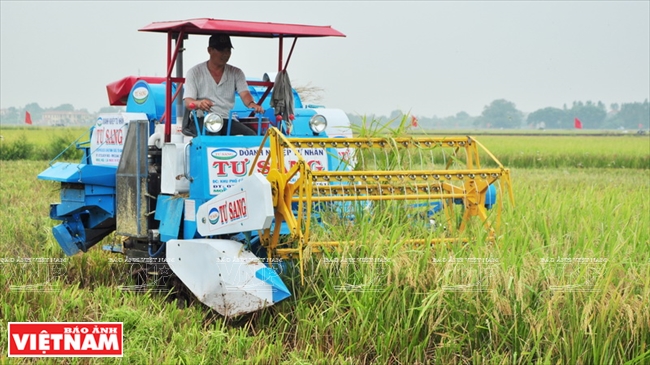
Combined harvesters shorten harvesting time for farmers. Photo: Files
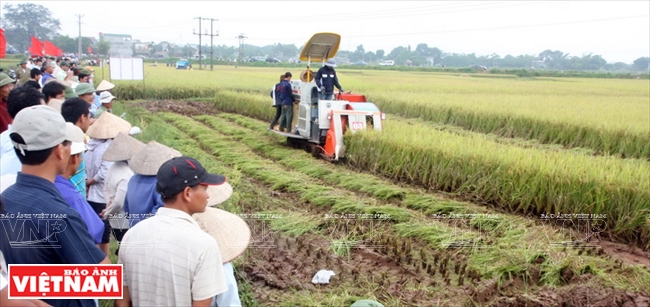
Hanoi farmers use combined harvesters during the harvest season. Photo: Files
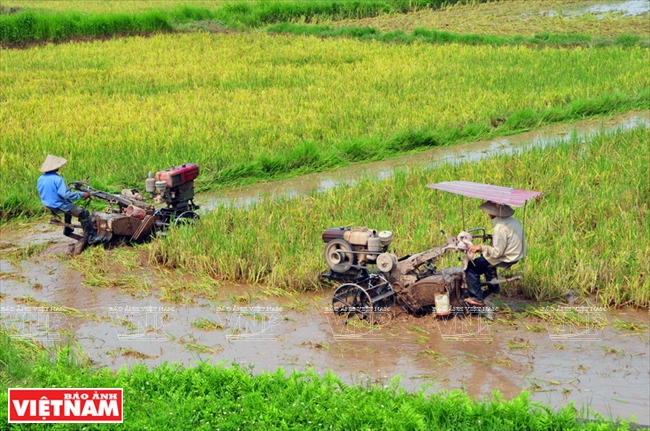
Using plowing machines in lowland fields. Photo: Files
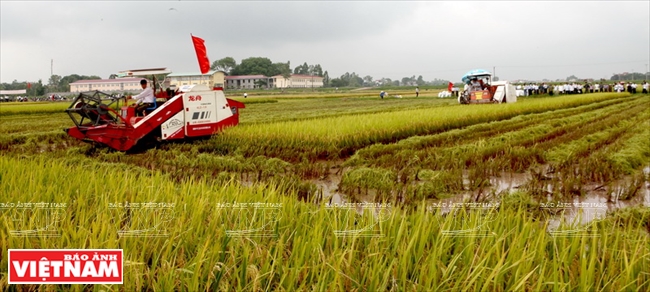
Hanoi farmers widely use combined harvesters. Photo: Files
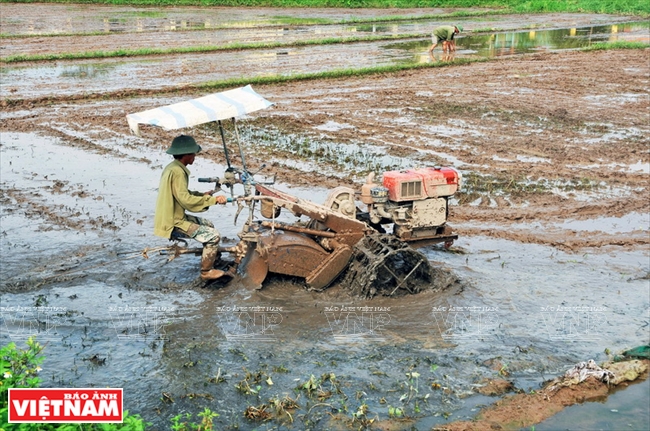
Farmers in Song Phuong commune use plowing machines. Photo: Files
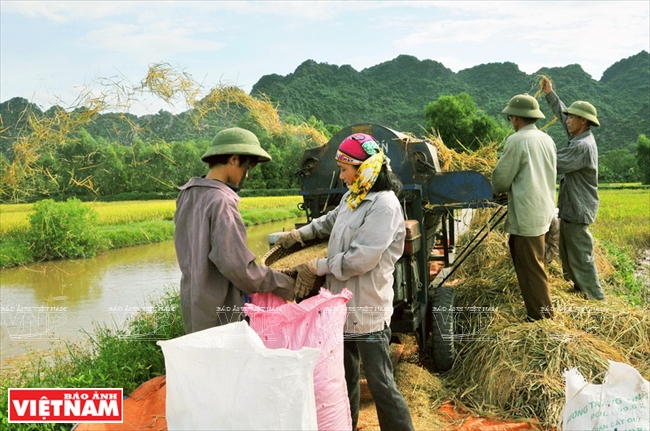
Harvesting rice in Hung Tien commune, My Duc district. Photo: Files |
Story: Thuc Hien Photos: Cong Dat & Files